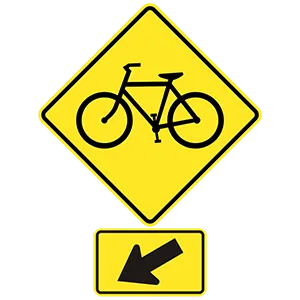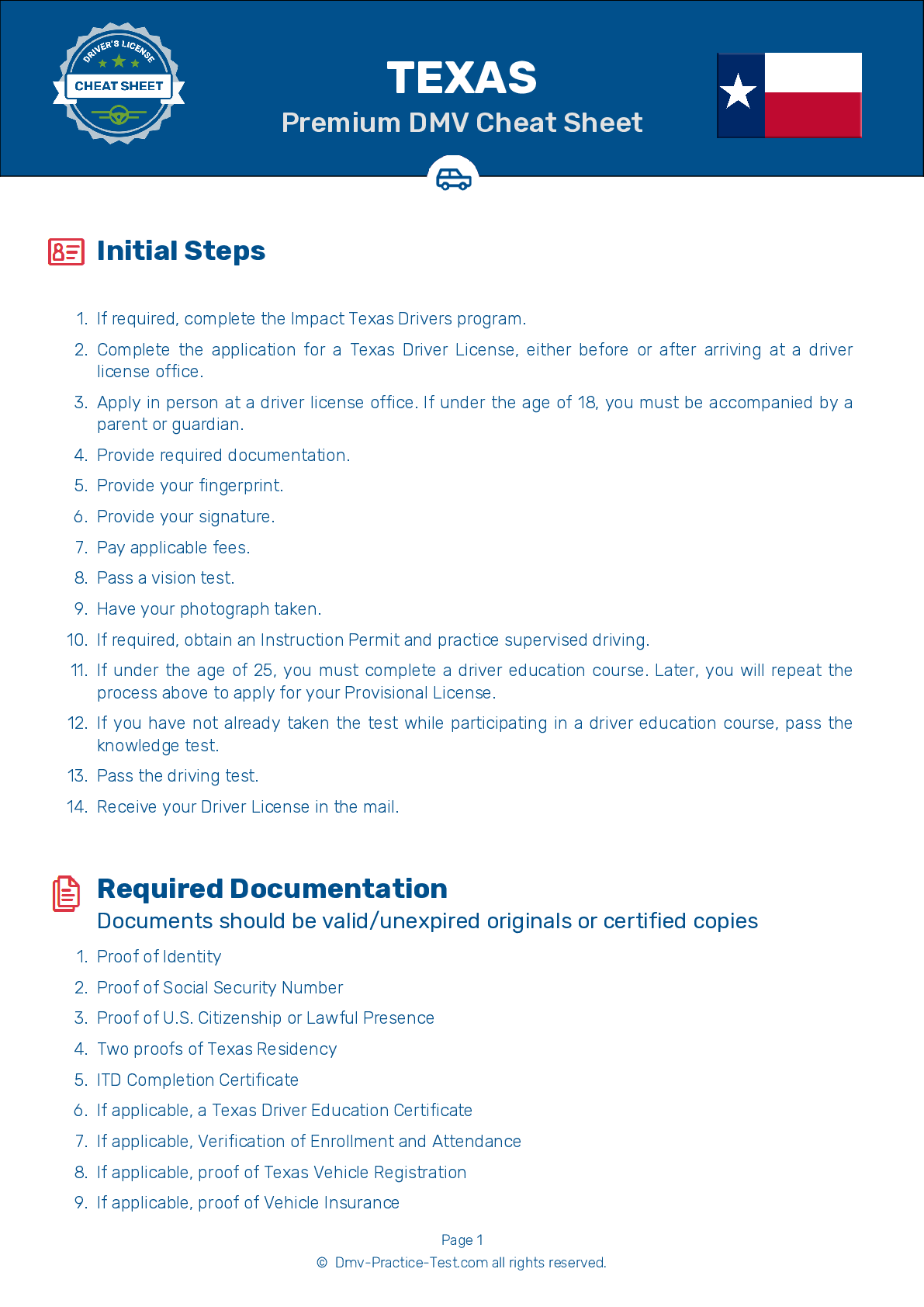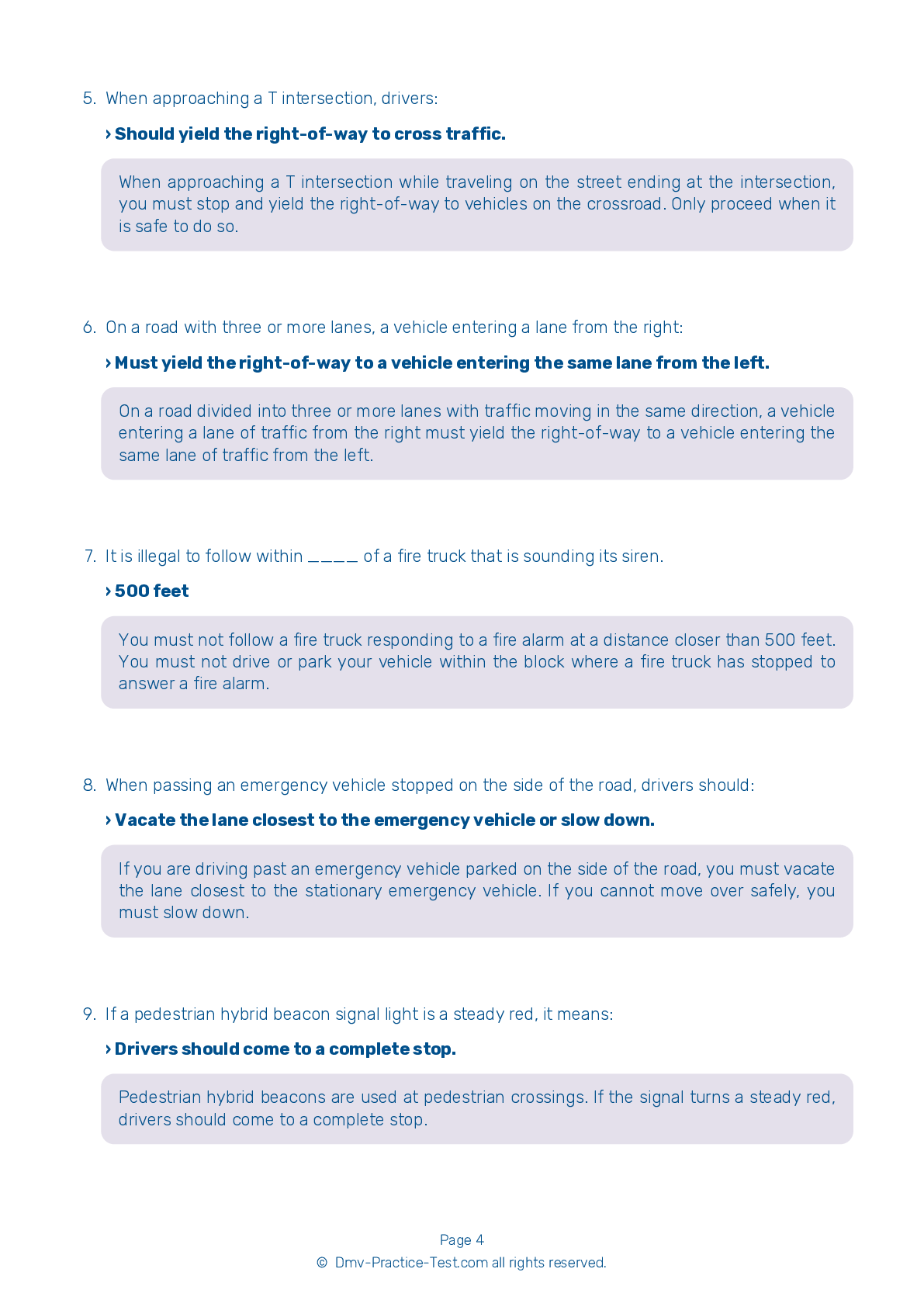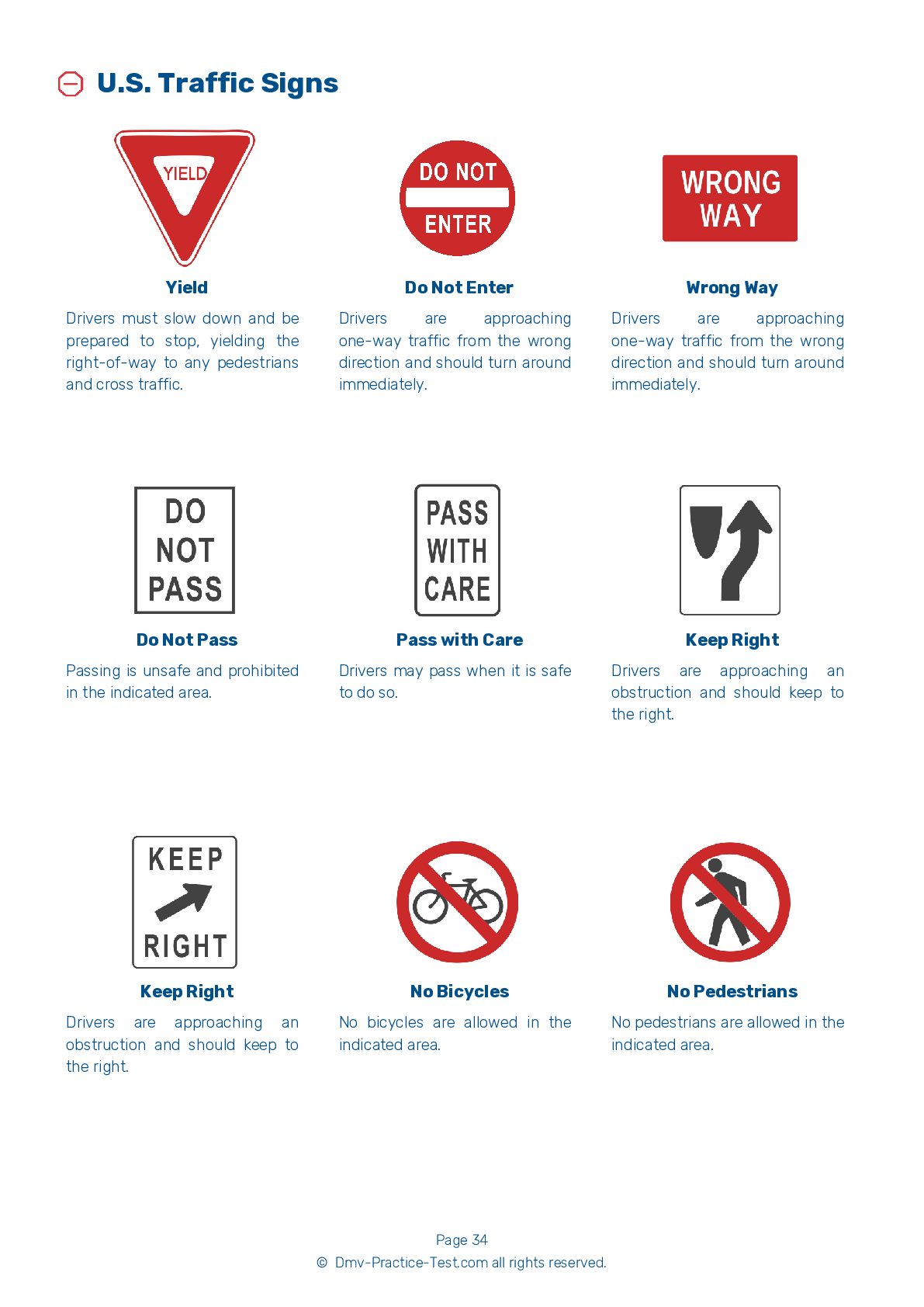FREE Texas DMV Practice Test #21 Page 5 of 5
For January 2025, the Texas DMV practise exams have been revised. It comprises questions based on the most important traffic signals and laws for 2025 from the Texas Driver Handbook. To study for the DMV driving permit test and driver's licence exam, use actual questions that are very similar (often identical!) to the DMV driving permit test and driver's licence exam.
Each question on the practise exam has a tip and explanation to help you recall the ideas. Questions about traffic rules, traffic signs, and driving statutes, as well as knowledge from the Driver Handbook, will be included in the written portion of the official Texas DMV test.
You must properly answer 21 of the 30 questions to receive a passing mark. Use the Texas Department of Motor Vehicles' practise exam to help you prepare for your instruction permit or driver's licence.
The DMV exam is offered in a variety of languages.
Using any form of testing help will result in an automatic fail, and the DMV may take further action against your driver's licence, so avoid it.
25 . This road sign means:

This sign (with the arrow below) indicates the location of a bicycle crossing/path. Drive with caution around this sign because bicycles likely regularly cross or ride beside traffic in the area.
26 . When entering a street from a driveway, you:
Always stop before entering the roadway from a driveway and yield to any approaching vehicles or crossing pedestrians. The stop should be made before crossing the sidewalk area. Failure to stop is unlawful.
27 . If there are two railroad tracks next to each other:
If there are two railroad tracks next to each other, watch for a second approaching train after one train passes. Do not begin to cross the tracks until you’re sure no train is approaching from either direction on either track.
28 . When parallel parking between two cars, you should first:
After finding a parking space, checking traffic, and signaling, you should stop parallel to the vehicle directly ahead of your desired parking space before turning your wheel to park.
29 . When a vehicle with an Anti-Lock Braking System starts to lose traction on a slippery road, drivers should:
If their vehicle loses traction on a slippery road, a driver with an Anti-Lock Braking System (ABS) needs to press down hard on the brake pedal, hold it, and steer out of danger. In an emergency situation, the ABS automatically pumps the brakes at a faster rate than the driver could. Removing steady pressure from the brake pedal or pumping the brakes will disengage the ABS.
30 . What do large flashing arrow panels indicate?
Large flashing or sequential arrow panels are used in construction areas where a lane is closed. Prepare to slow down and merge in the direction indicated by the arrow.
See the exact questions that will be on the 2025 Texas DMV exam.
99.2% of people who use the cheat sheet pass the FIRST TIME
LT gives us an insight on how the cheat sheet provided her with all the study questions she needed before taking her test.
Joe initially studied with the handbook and failed his test, he eventually found us online, studied and pass his test the first time around.



